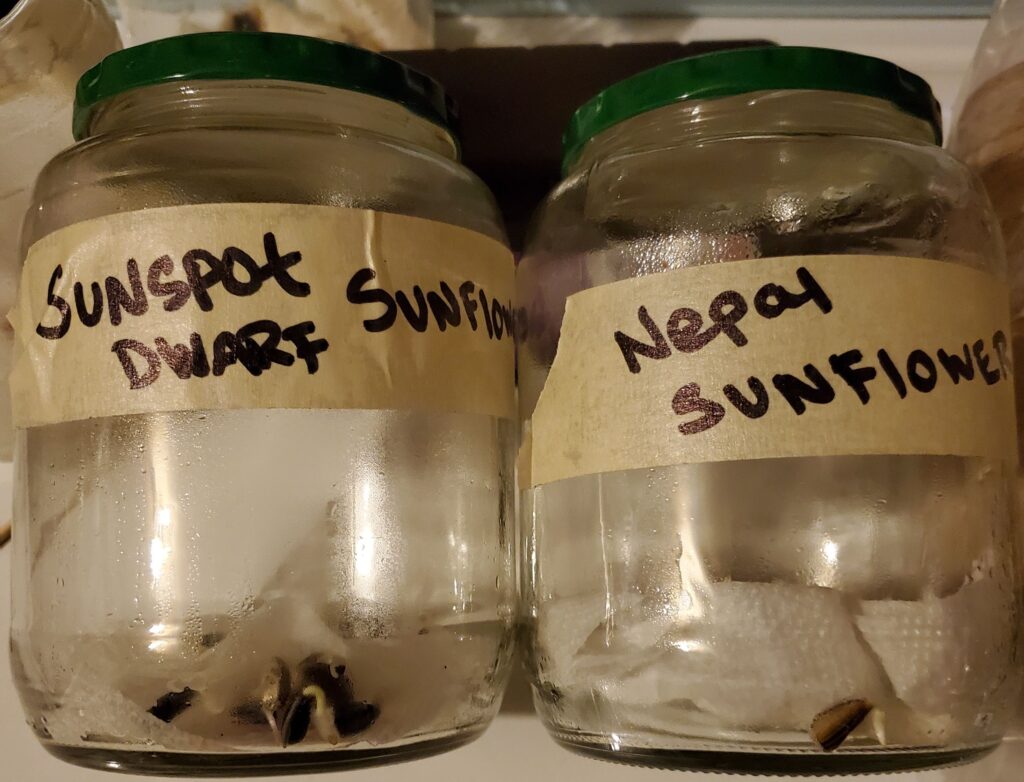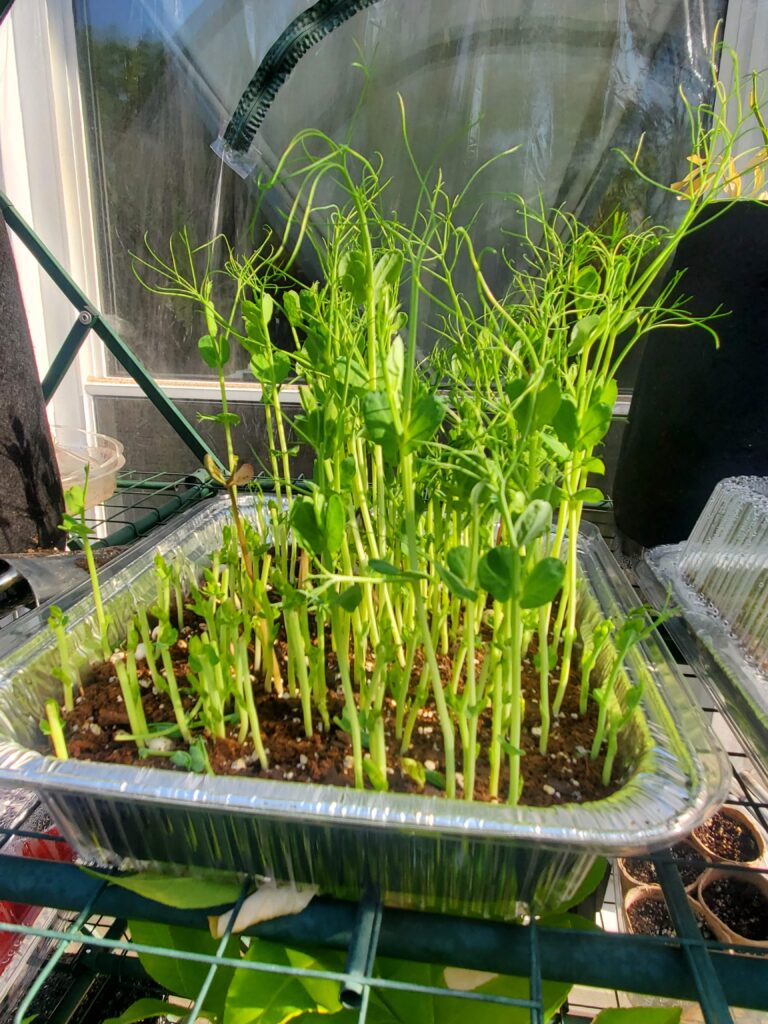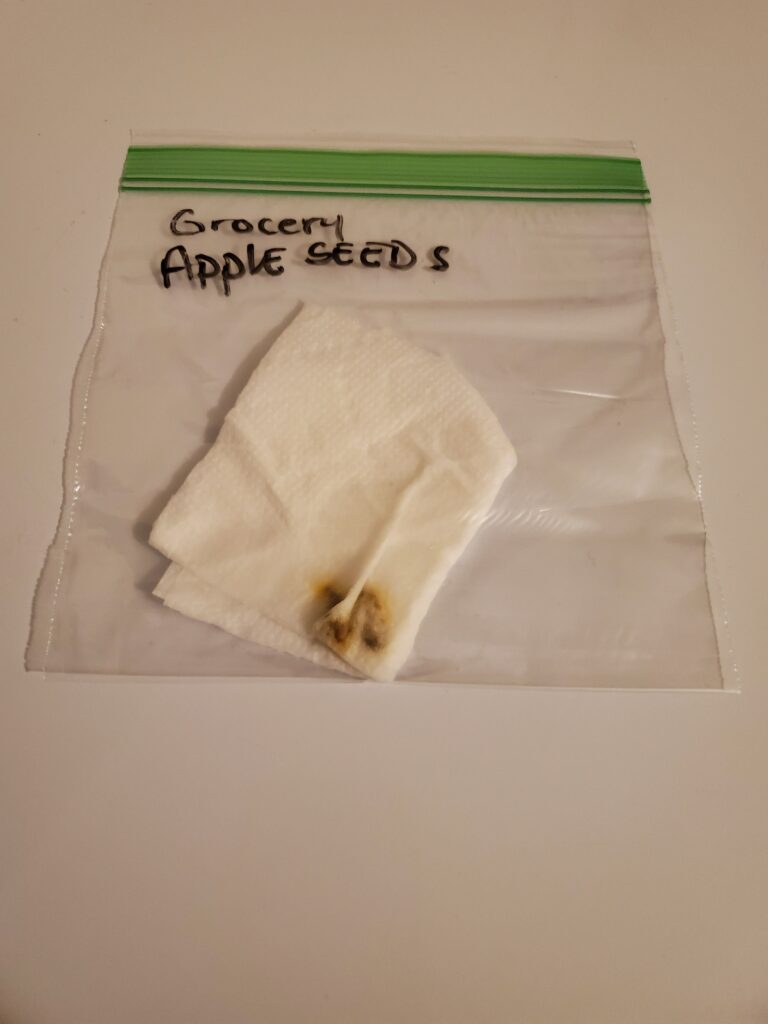Part 3: How to plant the things that you found and prepped
Table of Contents
In the first part of this series, we looked in the refrigerator, pantry, and garage for things to plant. In the second part, we prepped the things that we found. In this part, we will plant these things using items that can be upcycled from your kitchen.

I separated these items into categories based on what material they are made of.
Let’s start with glass.

Any kind of glass jar. Save the lids. Glass jars are versatile and durable.
Glass jar uses:
- Rooting Kitchen Scraps
- Germinating seeds using the petri dish method
- Growing Kitchen Scraps
If you are going to grow in a glass jar you will have to use pebbles or craft beads to create a water reservoir in the bottom, below the soil.
Next, let’s talk about paper and wood.
Half gallon milk cartons are good as planters.
Cardboard egg cartons are good for starting seeds or for use in your compost bin. We will talk more about compost later.
Wooden skewers are handy for all kinds of gardening applications.
Wooden skewer uses:
- Stakes to support your small plants
- Poke holes in soil for planting small seeds
- Adjusting paper towels in a plastic bag or glass jar when using the paper towel or petri dish method
The next category is foil.
I like to use foil pains as trays or to plant directly in. A foil pan with a plastic lid makes a great little greenhouse for your seedlings.

The last category is plastic.
You can make a mini greenhouse out of a plastic gallon sized jug.
To make a greenhouse, make a horizontal cut in the jug three inches up from the bottom across the front and two sides. Do not cut the jug all the way across the back side (where the handle is). Save the top.
Put two inches of soil in the bottom of the jug. Plant seeds in the bottom half of the jug. Water. Use tape, masking tape, and duct tape are my favorites, to seal the jug. You can start warm-weather plants in these jugs and set them outside when it’s still a little bit cold.
You can use plastic sandwich bags for germination. This is called the paper towel method. You can also use plastic sandwich bags to hold in humidity around cuttings or seeds that are germinating.

Plastic food containers from yogurt or sour cream are a good size for starting small plants or growing herbs. You must cut or poke holes in the bottoms of these containers if you are growing in them. Make sure you save the lids. The lids can be used as drip trays under the containers so you don’t ruin your surfaces.
Now that you know how to get your kitchen scrap garden started in small containers we will look around for larger containers to transplant into in the final post of this series.



0 Comments